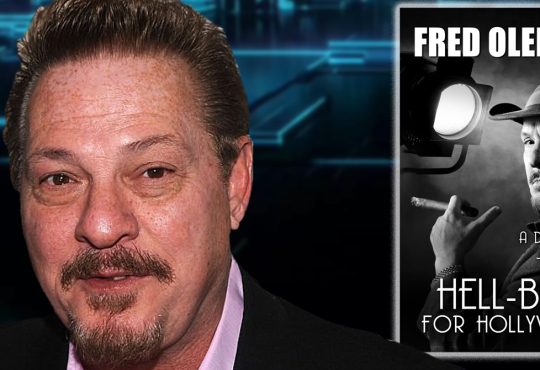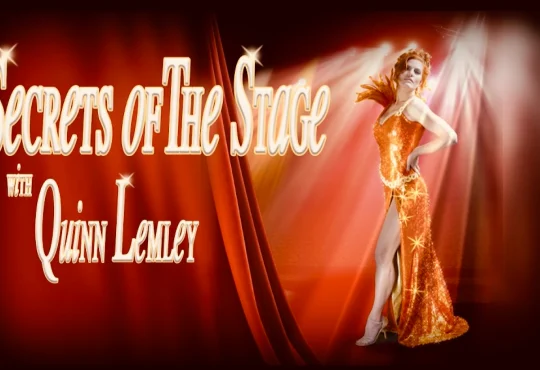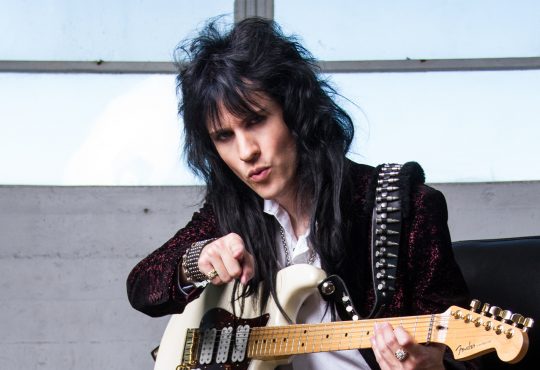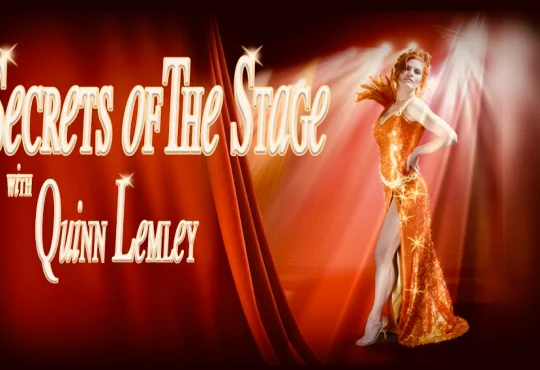In Defense of Che Diaz
There’s a popular concept on Twitter known as the Main Character, or someone who fills the position of flogging post after having posted something outrageously stupid. Usually, the Main Character is a minor columnist with a bad parenting take, or a clueless centrist pundit who takes umbrage to people making fart jokes about their name. For the past six weeks or so, the Main Character on Twitter has been Che Diaz.
On paper, there is nothing patently offensive about Che Diaz, Carrie Bradshaw’s boss on the Sex and the City sequel And Just Like That… . Che, played by Broadway and Grey’s Anatomy star Sara Ramirez, is a podcast host and standup comedian. They are not particularly good at hosting podcasts, nor are they particularly funny, but honestly, the same could be said of the majority of podcast hosts and comedians working today. They are Irish-Mexican, queer, and nonbinary, all of which are referenced frequently in their creative output. Perhaps the most salient aspect of Che’s character, however, is that they are key to the married, heretofore heterosexual Miranda Hobbes’ (Cynthia Nixon) queer sexual awakening, a plot point that has been telegraphed from the very beginning of the reboot.
Even on AJLT, Che is not depicted in a uniformly positive light. They’re a blatant fuckboy — “DM me sometime,” they casually say to Miranda after bringing her to orgasm in their employee’s (!) kitchen (!!) — and and they are often depicted smoking bowls in inappropriate settings (or, as the boomers and X-ennials who presumably comprise the AJLT staff put it, “do[ing] a lot of weed”).
Yet on social media, Che has sparked a level of opprobrium that ranks somewhere in between that generated by virulently antichoice senators and Chrissy Teigen. Every aspect of the character has become fodder for mockery, from their staggeringly unfunny Netflix “comedy concert” to their tendency to show up uninvited at their employee’s house and announce themselves by their full name; to their lack of consideration in smoking weed around non-drug users. (A lot of people have pointed to a scene where Che encourages Miranda to shotgun a joint as an example of their lack of regard for consent; though I would argue that if the worst thing that’s happened to you is a hot nonbinary person lightly peer-pressuring you to smoke weed, you’ve had a pretty good life.)
Few people seem to believe that Che is an accurate reflection of the lived LBGTQ experience. “Does it feel superauthentic to me as a queer, trans person? Not really,” says trans model and adult entertainer Dylan Thomas. “But it does follow a pattern as defined by Hollywood… I believe representation in the beginning, as portrayed through the lens of non-members of a community, often misses the mark, while the intention for visibility is good.” He compares Che to Max, a much-hated trans male character in the original The L Word, who was criticized by many members of the community for perpetuating harmful stereotypes until, 20 years later, giving way to a much more developed trans male character on the L Word reboot.
While there are currently no nonbinary or gender-nonconforming writers on And Just Like That… (though two of the writers, Michael Patrick King and Samantha Irby, identify as queer), a source says the creative team was advised by a representative from GLAAD, and that transgender comic and downtown New York City fixture Murray Hill helped develop Che’s stand-up special (the aforementioned “comedy concert”). Perhaps most notably, the writers are said to have worked closely with Ramirez, who came out as nonbinary themselves in 2020.
In critiques of the character, the one word that pops up over and over is that Che is “cringe,” a term coined by zoomers and late-millennials to automatically dismiss anything that reeks of earnestness or effort. “‘Cringing’ is not a strong enough verb to describe what the body reflexively does when they are onscreen, like a physical defense mechanism,” Kevin Fallon wrote in a Daily Beast piece titled “Che Diaz Is the Worst Character on TV.” “It’s more like an elaborate tuck and roll off the couch followed by an army crawl to hide under the bed.”
Fallon faults Che for being not just annoying but a flattened caricature of a queer person of color, inserted by the writers into the reboot to deflect from longstanding critiques of the franchise as white and heteronormative. But that characterization inherently dismisses the significance of a mainstream, hugely popular TV franchise depicting a nonbinary character in the first place. It also does no justice to the performance of Ramirez themselves, an explosively talented Broadway and TV actor who infuses the role with swagger and cocksure energy. And it completely rejects the idea that queer and gender-nonconforming people can, in fact, also be cringe. As Ramirez themselves put it, addressing the backlash in a recent roundtable: “Che isn’t here to be liked, Che isn’t here for anyone’s approval. Che is not here to represent the entire LGBTQ+ community or a spectrum of Spanish-speaking people or Latin-identified people or Hispanic-identified people. They’re here to just be themselves.”
Some LGBTQ fans of the character agree, such as Tomas, 32: “I think the most cringeworthy aspect of Che’s character is the idea that they are a checklist of clichés: hypersexual, bad fashion, comedian with a podcast, drug use. But I mean, so am I, lol.”
Admittedly, Che does seem to have been created as a way to preemptively silence any critics of AJLT who might decry its lack of diversity. In fact, they are just one of many new Black and brown characters who feel haphazardly injected into And Just Like That‘s narrative petri dish, some of whom have advanced far more in terms of their own cell development than others. (I defy you to tell me anything about Nicole Ari Parker’s character Lisa other than that she loves oversized eyewear and hates her mother-in-law.) “Che Diaz primarily feels more like an over-the-top caricature of a nonbinary person as opposed to a humanized, well-developed character,” Thomas says. “[I’d] love to have Che as an equal character [to the others], not just Miranda’s introduction into queer culture.”
But perhaps Che’s flatness is also kind of the point. In a show that is largely about three wealthy, wildly out-of-touch white women slowly coming to terms with their own cultural irrelevance, Che is intended to serve as a representation of a rapidly evolving society that is leaving these women behind. And whether by design or not, the writers’ inability to fully breathe life into the character, or render them anything beyond a series of traits loosely associated with “woke” queer people, is one of the purest crystallizations of that mission.
Demographically speaking, no one represents the obverse of what Sex and the City has traditionally stood for — the trials and tribulations of privileged, heterosexual white women — and how the show needed to evolve in order to survive, better than Che Diaz. And Che also poses a challenge to other tired elements of the original franchise as well. For starters, Che serves as a lens through which Charlotte has been able to slowly come to terms with her daughter Rose’s gender fluidity, a plotline that has been handled surprisingly deftly and that I, as a parent, have found truly beautiful to watch. Che is also useful as a foil to the comically self-absorbed Carrie: She is seemingly the sole character in the show’s 20-plus-year history that does not seem to find Carrie unspeakably charming. (For longtime SATC fans and Carrie-haters, watching Carrie pee the bed while being forced to listen to her friend get finger-banged in the next room is the purest form of schadenfreude there is.) When Che called out Carrie for being a sex columnist too prudish to speak openly about masturbation, I snapped appreciatively as if I were an audience member at their “comedy concert.”
Che is also aggressively confident and self-assured, almost to the degree of self-parody — a characterization that falls in line with Sex and the City’s broadly written comedic style, but also goes a long way toward refuting stereotypes about queer people. “I appreciate seeing a nonbinary character written with strength and confidence in mind rather than the played-out victim-type queer role we often see,” Thomas says. “Sara Ramirez plays this particular role with such charisma and that is maybe one of the best things I can see in this character — that Che is meant to not play small, so that they can help project an image of queer power that we do not often see in Hollywood.”
But perhaps Che’s most significant role in the show — and the one that has been the greatest source of consternation to its fans — is as a life-altering love interest for Miranda, who has long been married to the fan favorite Steve (David Eigenberg). When we first re-meet Miranda, she is a far cry from the hypercompetent and confident character we’ve grown to know and love. She’s quit her corporate job, her marriage has devolved into a series of sexless frozen-yogurt nights, and she’s sneaking shots of vodka before class. Like many middle-aged women, particularly mothers, her life is on autopilot.
Then Miranda meets Che, and overnight, that changes. From the moment Che urges the audience to “change your life” as simply as one would change a T-shirt, Miranda is entranced. When they have their fleeting sexual encounter, Miranda insists that Che makes her “feel alive.” The relationship is messy and ill-advised and clearly not going to end well. By the eighth episode, Che has admitted to Miranda they have feelings for her, but is firm that they are unable, or unwilling, to have a traditional romantic relationship. Still, Miranda fails to hear this, casually breaks things off with Steve, and rushes off to Cleveland to surprise Che at their gig. These aren’t great decisions, but Che’s inability to fully commit to Miranda certainly feels in character for a narcissistic fuckboy comic with a minor following, while Miranda’s giddy recklessness feels part and parcel for a woman who has just discovered a part of themselves they thought had died long ago.
In this respect, it’s hard not to see the Che-Miranda relationship as somewhat personal, for both of the actors playing them. Nixon, who directed the kitchen-sex episode, left her husband of 15 years for a woman while the original Sex and the City was still airing. Ramirez, too, came out as queer and bisexual in 2016 while still married to their then-husband, and last year announced the end of their marriage after coming out as nonbinary. Some critics have denounced Che for merely serving as a tool for Miranda’s coming-out narrative, but that does not seem entirely fair to either Ramirez, who was involved in crafting of the character, or to Che, who speaks often on the show about their own journey toward living more authentically. In one scene in a hospital cafeteria, Che discusses how their struggles with an intestinal disorder led to them coming out: “Cheryl used to hold everything in, all that unhappiness and shame twisted up in there, making her physically and emotionally constipated, just lying to herself and everyone else, just feeling so trapped,” they say. “But now, I just let it all out.”
That the stand-up is bad, and that pooping your pants could be the key to unlocking the secrets of one’s relationship with their gender, is beside the point. Che may suck, but Che is also unapologetically, albeit annoyingly, themselves, and that shouldn’t be dismissed, both in the context of the show and in the context of larger discussions about representation.
Neither actor has publicly commented on how, if at all, the Che-Miranda storyline might parallel their own lives. But it’s fair to say that both know intimately the courage required to blow up one’s entire life in order to live more authentically as themselves, no matter how painful or chaotic or, yes, even cringe that may look to those observing on the outside. It is an experience that few of us watching are brave enough to know, but for those who do, I can’t imagine they’d feel anything less than gratified at seeing it unfold onscreen. And the next time I’m watching AJLT and I hear Ramirez say, “Hey, it’s Che Diaz,” I for one will not cower in fear beneath the couch, but shout a resounding “Hey, Che Diaz!” back.







